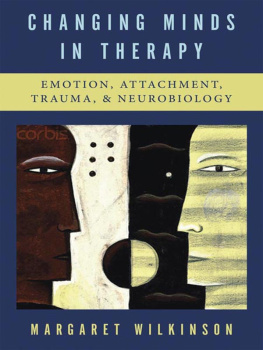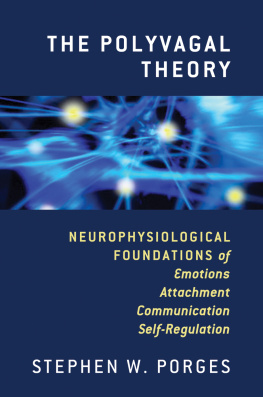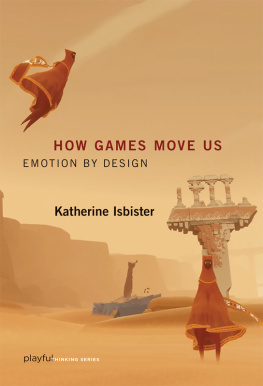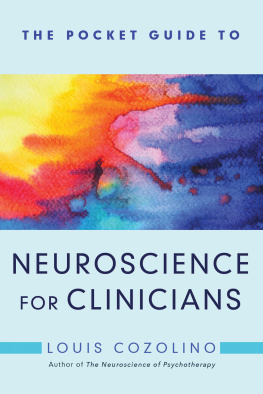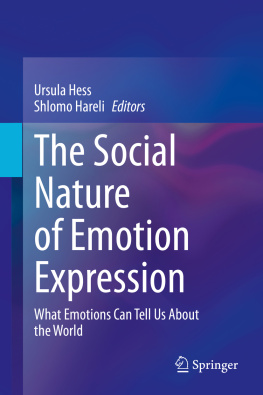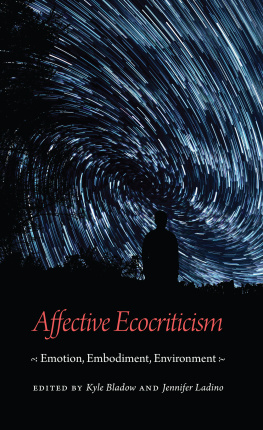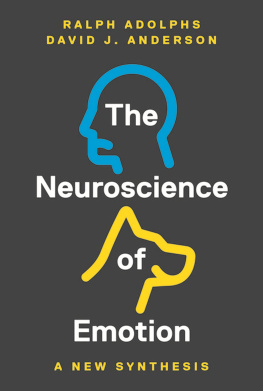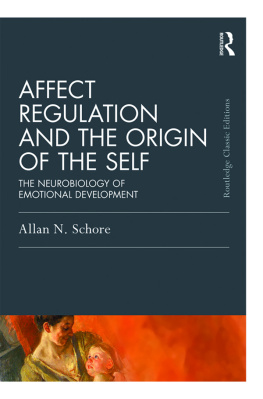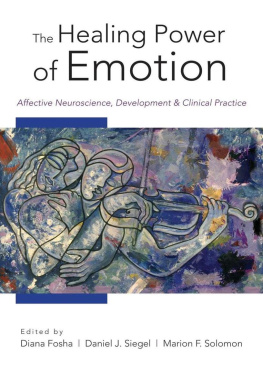Copyright 2009 by Diana Fosha, Mind Your Brain, Inc., and Marion F. Solomon
Reciprocal Influences Between Body and Brain in the Perception and Expression of Affect: A Polyvagal Perspective copyright 2009 by Stephen W. Porges
For information about permission to reproduce selections from this book, write to Permissions, W. W. Norton & Company, Inc., 500 Fifth Avenue, New York, NY 10110
The healing power of emotion: affective neuroscience, development, & clinical practice / Diana Fosha, Daniel J. Siegel & Marion F. Solomon, editors.1st ed.
p. cm.(The Norton series on interpersonal neurobiology)
A Norton Professional Book.
Includes bibliographical references and index.
1. Emotions. 2. Affective neuroscience. 3. Neuropsychology. I. Fosha, Diana. II. Siegel, Daniel J., 1957III. Solomon, Marion Fried.
W. W. Norton & Company, Inc., 500 Fifth Avenue, New York, N.Y. 10110
www.wwnorton.com
W. W. Norton & Company Ltd., Castle House, 75/76 Wells Street, London W1T 3QT
Introduction
Diana Fosha, Daniel J. Siegel, & Marion Solomon
H ARDWIRED TO CONNECT with each other, we do so through emotions. Our brains, bodies, and minds are inseparable from the emotions that animate them. Emotions are at the nexus of thought and action, of self and other, of person and environment, of biology and culture. Emotion is a term that evokes many connotations, from the way we feel to the ways our lives are integrated across time. Specific emotions include love, joy, pain, fear, anger, gratitude, grief, care, closeness, awe, shame, excitement, agony, passion, and compassion. At one end of the continuum, we find extreme emotional states such as helplessness, terror, despair, and immobility; at the other, faith, enthusiasm, curiosity, tenderness, aesthetic wonder, ecstasy, wisdom, awe, vitality, and even transcendence.
We live in exciting times of shifting paradigms and emerging frontiers. The neuroscience revolution that has already changed our field has revealed the primacy of affect in the human condition. The Norton Series on Interpersonal Neurobiology, of which this book is a part, documents this revolution. This integrative, cross-disciplinary book at once reflects and expands that paradigm shift.
In parallel fashion, in the field of psychotherapy the locus of therapeutic action has begun to shift in emphasis from models favoring cognitionand, accordingly, top-down interventionsto models that assert the primacy of bodily rooted affect. Such experiential or bottom-up therapies consider insight to be the result , rather than the agent, of therapeutic change; they maintain that the deeper the bottom (in evolution, in the body, in the brain), the higher the top , andnot incidentallythe more effective and efficient the treatment. At one time marginalized, treatments that focus on emotion and the somatic manifestations of psychological processes are receiving fresh consideration. Moreover, increasing evidence about the plasticity of the brain throughout the lifespan is beginning to influence not only our techniques and effectiveness, but also to galvanize our therapeutic hopes and ambitions.
Just as emotionally traumatic events can tear apart the fabric of individual psyches and families, emotions can also act as powerful catalysts for healing. Like emotion, healing too is also gaining scientific respectability: We are starting to understand that healing is a process with its own characteristic phenomena and mechanisms, one that needs to be elucidated in its own rightand that emotions are at the core of it.
How do we regulate emotion in a healthy way? How do we foster environments conducive to its flourishing and reciprocity, the stuff of communication and resonance, of optimal health and effectiveness of action, of resilience, and of caring relationships? How do we do so without becoming flooded and overwhelmed? How can we use emotion to repair and heal, to grow and learn? How do we use emotion to mend ruptures caused by emotion? These questions, central to all clinical endeavors, are explored from a variety of perspectives in the chapters that follow.
This book provides the conceptual underpinnings for an experiential clinical therapeutics supported by neuroscience and developmental research. Although the contributorsneuroscientists, developmentalists, and cliniciansoperate in different realms, all share certain assumptions about the primacy of emotion, the importance of engaged, empathic relatedness for the regulation and processing of emotion; and the value of experiential models of treatment that privilege bodily rooted experience. And while each author focuses on one part of the whole, we are all talking about the same elephant. Given the breathtaking variety of views on emotion, the resonant synchrony of the parts and the coherence of the whole is exhilarating. Just listen to physicist Richard Feynman:
Which end is nearer to God, if I may use religious metaphor, beauty and hope, or the fundamental laws? I think that the right way of course, is to say that what we have to look at is the whole structural interconnection of the thing ; and that all the sciences, and not just the sciences but all the efforts of intellectual kinds, are an endeavor to see the connections of the hierarchies, to connect beauty to history, to connect mans history to mans psychology, mans psychology to the working of the brain, the brain to the neural impulse, the neural impulse to the chemistry, and so forth, up and down, both ways. And today we cannot, and it is no use believing that we can, draw carefully a line all the way from one end of this thing to the other, because we have only just begun to see that there is this relative hierarchy. And I do not think either end is nearer to God. (1965, p. 125, emphases added)



